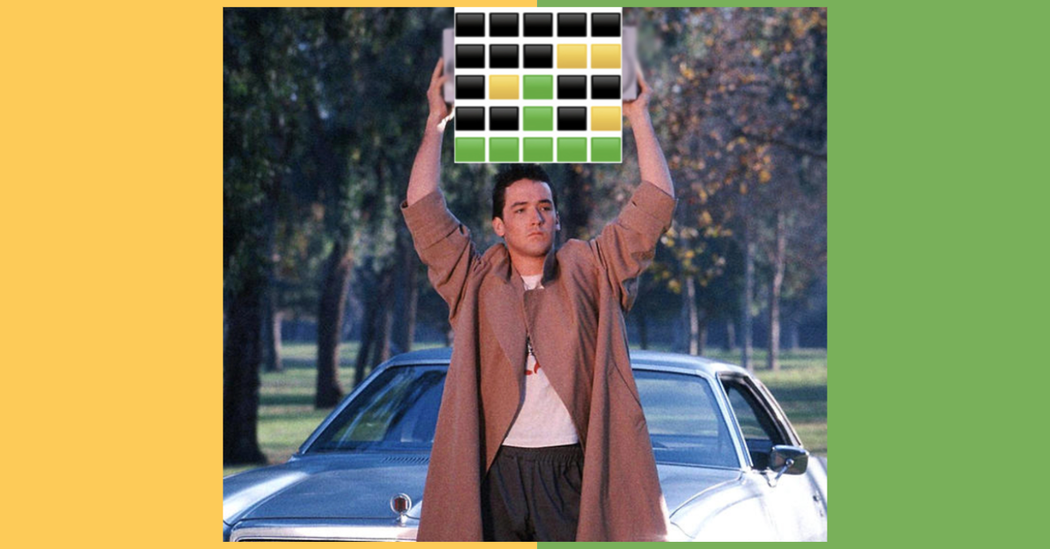In the span of three months, Wordle went from a personal gift to a viral sensation — and now, everyone wants in.
The buzz can be attributed to the spoiler-free scoring grid of green, yellow, black and white blocks that allows players to share their Wordle wins across social media, group chats and more. To play the game, players guess a predetermined five-letter word in just six tries, similar to the process in “Lingo,” a popular late ’80s game show. The yellow and green squares indicate that Wordle players guessed a correct letter or a combined correct letter and correct placement for that letter.
Josh Wardle, a software engineer, initially created the game as a gift for his partner. It was released to the public in October, and it exploded in popularity in a matter of months. Ninety people played the game on Nov. 1, according to Wardle. Nearly two months later, 300,000 people played it.
Wordle grew in popularity mostly because of Twitter. From Nov. 1 to Jan. 13, about 1.3 million tweets on Wordle have flooded Twitter, according to Siobhan Murphy, the platform’s communications lead. So far this year, the conversation on Twitter about Wordle has experienced a daily average growth rate of 26 percent, Ms. Murphy said.
Wordle is free for players and doesn’t have any ads, creating the ideal user experience. The success of nearly any product this popular is often followed by copycats, waddling behind in an effort to capitalize on the buzz. Wordle alternatives appeared just days after the original game went viral. Some of the imitators aimed to give players more guesses for a single word or several rounds of words in one day, while others just existed in the name of fun and, well, games.
Letterle, for example, gives 26 tries to guess the letter of the day. Queerdle, which calls itself the “yassification of Wordle,” remixes Wordle and includes a few “very NSFW” words. Absurdle provides unlimited guesses but continues to get harder with each word that solvers input.
However, the most notable imitator was aptly named Wordle and offered as an app, unlike the original iteration of the game, which is a web page. The app’s creator, Zach Shakked, offered players a free trial of the same game with additional options for shorter and longer words. The app also offered a $30 unlimited Pro version. Apple took down the game — and other copycats — from its App Store shortly after Mr. Shakked tweeted about monetizing his version.
For fans, the Wordle obsession is a content gold mine. In fact, Twitter users have most likely dedicated just as much time to turning their colorful grids into viral memes, paintings, cartoons and comics as they have to playing the game. The game has even caught the attention of celebrities including “The Tonight Show” host Jimmy Fallon and the “Succession” actress J. Smith-Cameron.
In one meme, John Cusack is holding not a boombox but a Wordle grid above his head. “Say Anything…”? More like, “Say You’ll Share Your Wordle Score.”
Brands are tweeting about the trendy game, too. Lego created its own green and yellow grid out of bricks, and the Smithsonian tweeted a picture of a green, yellow and black tablecloth from its Cooper Hewitt collection.
Twitter users are also comparing the Wordle craze to the obsession with Farmville, a series of agriculture-simulation games that were released in 2009. The game, which was created and published by Zynga, practically took over Facebook, with users tending to their virtual crops and nudging their Facebook friends for help. Much like Wordle, Farmville was an internet sensation that burned brightly and brought in as many as 32 million daily active users in its heyday.
“There’s virtually no way to predict fads like this,” Will Shortz, the New York Times Crossword editor, said. “They take off for no apparent reason and then die as people move on to other things,” he added.
But Wordle does have a lot of things going for it. “What’s nice about Wordle is how simple, pleasant and attractive the computer interface is,” Mr. Shortz said. Limiting players to six guesses per day and rationing out one puzzle per day adds excitement to the solving process, he said. “It’s a great puzzle, and it doesn’t take long to play, which make it perfect for our age when people have short attention spans.”





